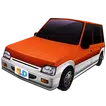AMD Radeon RX 9070 Review
The AMD Radeon RX 9070 enters the graphics card market at an interesting juncture. Hot on the heels of Nvidia's latest generation, this $549 card directly competes with the underwhelming GeForce RTX 5070. AMD easily wins this matchup, making the RX 9070 a compelling choice for 1440p gaming.
However, AMD's internal competition complicates matters. The RX 9070 is only $50 cheaper than the superior RX 9070 XT. While the 8% performance difference aligns with the price gap, the extra $50 for significantly better performance is a difficult pill to swallow. Despite this, AMD presents a strong offering within its own lineup.
Purchasing Guide
The AMD Radeon RX 9070 launches March 6th, starting at $549. Expect variations in pricing across different models. Prioritize purchasing a model closest to the MSRP given its proximity in price to the RX 9070 XT.
AMD Radeon RX 9070 – Photos
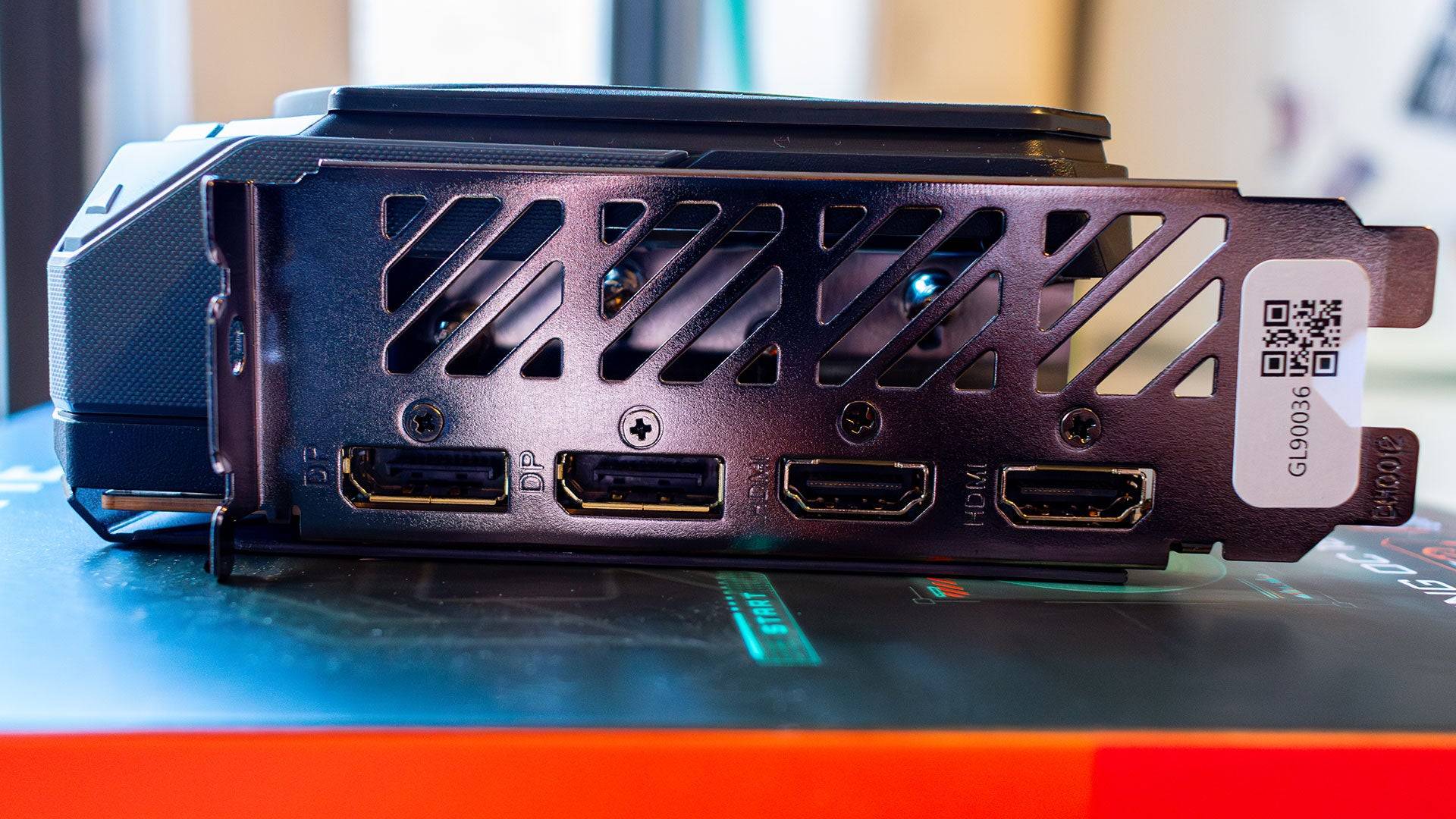
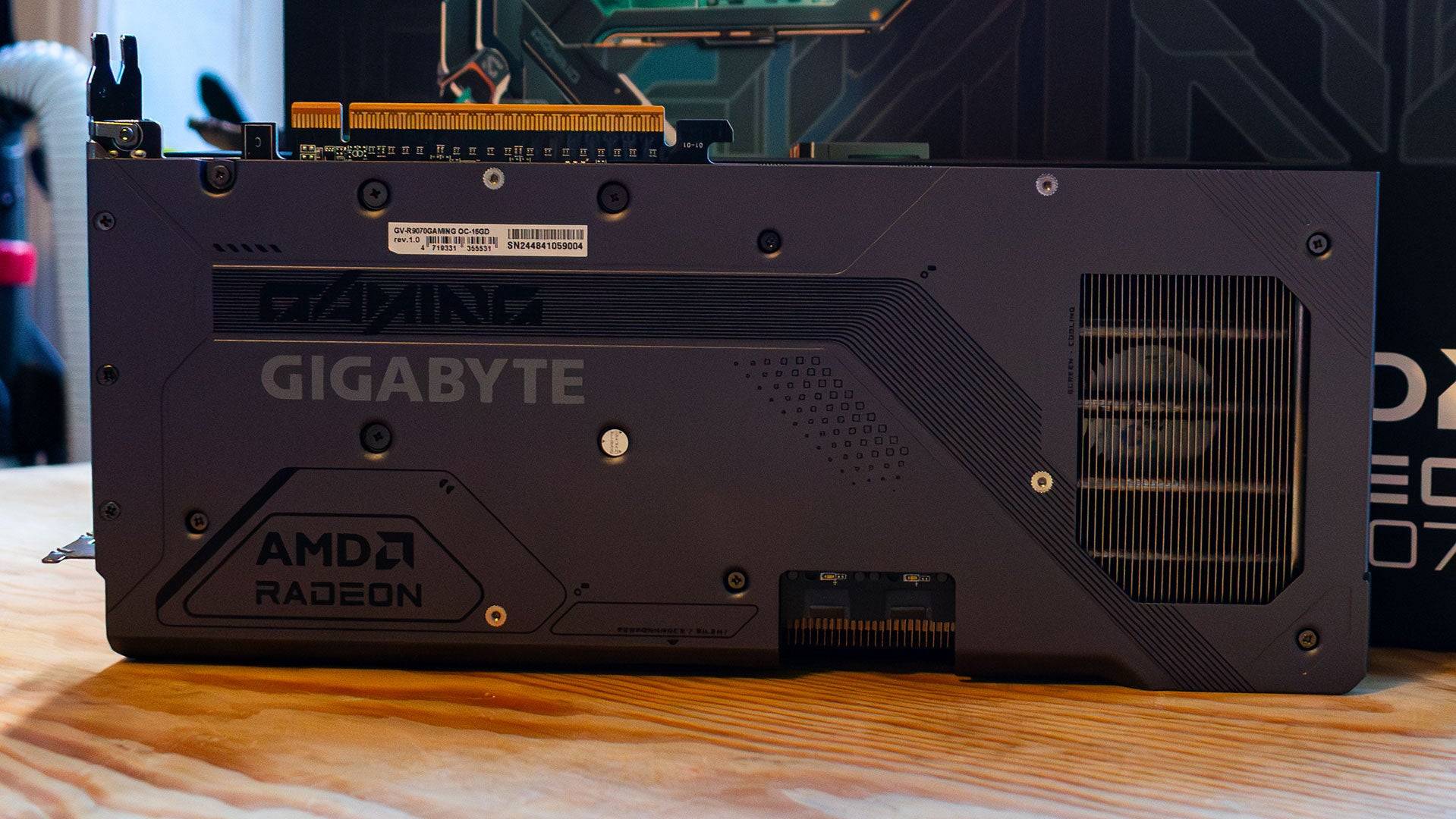 4 Images
4 Images
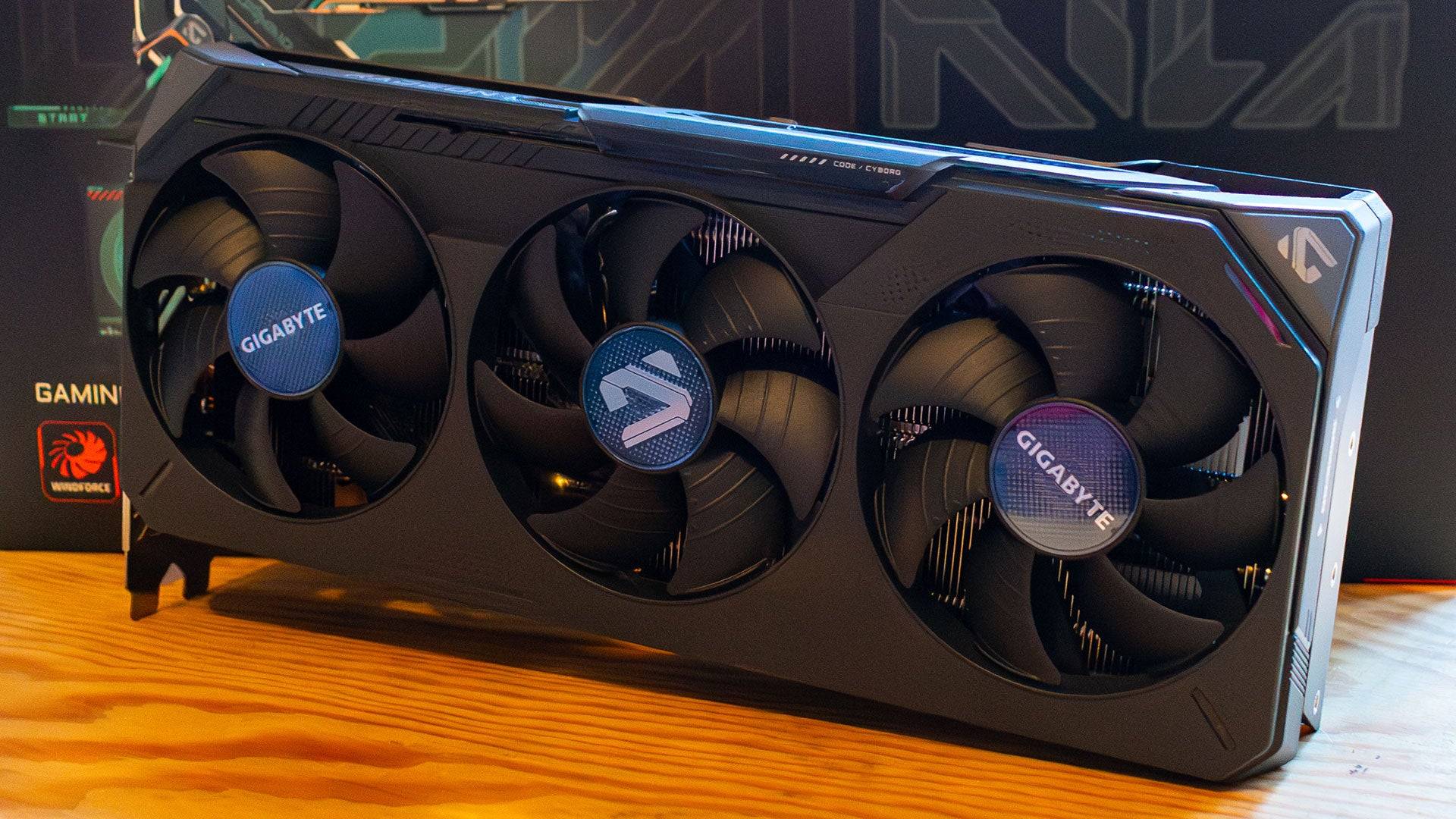
Specs and Features
Like the RX 9070 XT, the RX 9070 utilizes the RDNA 4 architecture. This results in substantial performance gains, significantly outperforming the previous generation Radeon RX 7900 GRE despite having 30% fewer compute units.
The RX 9070 boasts 56 Compute Units, each containing 64 Streaming Multiprocessors (SMs), totaling 3,584 shaders. Each compute unit includes one Ray Accelerator and two AI Accelerators, amounting to 56 and 112 respectively. These improved Ray and AI Accelerators enhance ray tracing capabilities and enable FidelityFX Super Resolution (FSR) 4, bringing AI upscaling to AMD GPUs for the first time.
It features 16GB of GDDR6 VRAM on a 256-bit bus, similar to the 7900 GRE, sufficient for 1440p gaming for several years. While GDDR7 would have been beneficial, it likely would have increased the cost.
AMD recommends a 550W power supply, with a 220W power budget. Testing revealed peak consumption at 249W; a 600W PSU is recommended for safety.
Crucially, unlike previous generations, AMD isn't releasing a reference design. All RX 9070 cards will be from third-party manufacturers. This review utilized the Gigabyte Radeon RX 9070 Gaming OC 16G, a triple-slot card with a factory overclock.

FSR 4
Since DLSS's emergence, AI upscaling has become a vital performance enhancer. FSR 4 finally brings this capability to AMD GPUs. Utilizing previous frames and in-game data, an AI model upscales lower resolution images to the native resolution. This differs from FSR 3's temporal upscaling, offering improved detail and reduced artifacts.
However, the AI processing introduces a slight performance penalty compared to FSR 3. The Adrenalin software allows users to choose between FSR 3 (better performance) and FSR 4 (better image quality).
AMD Radeon RX 9070 XT & 9070 – Benchmarks
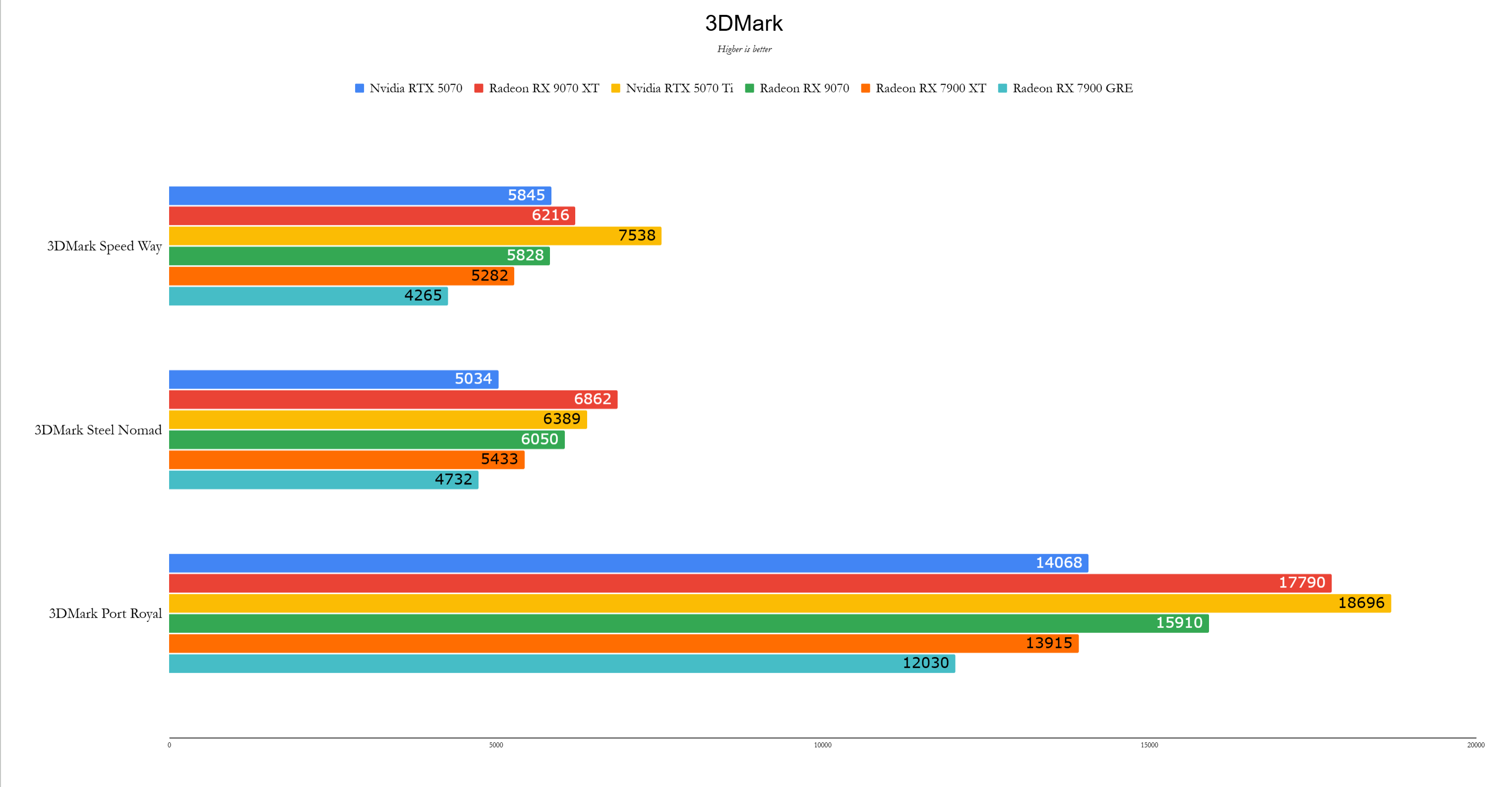
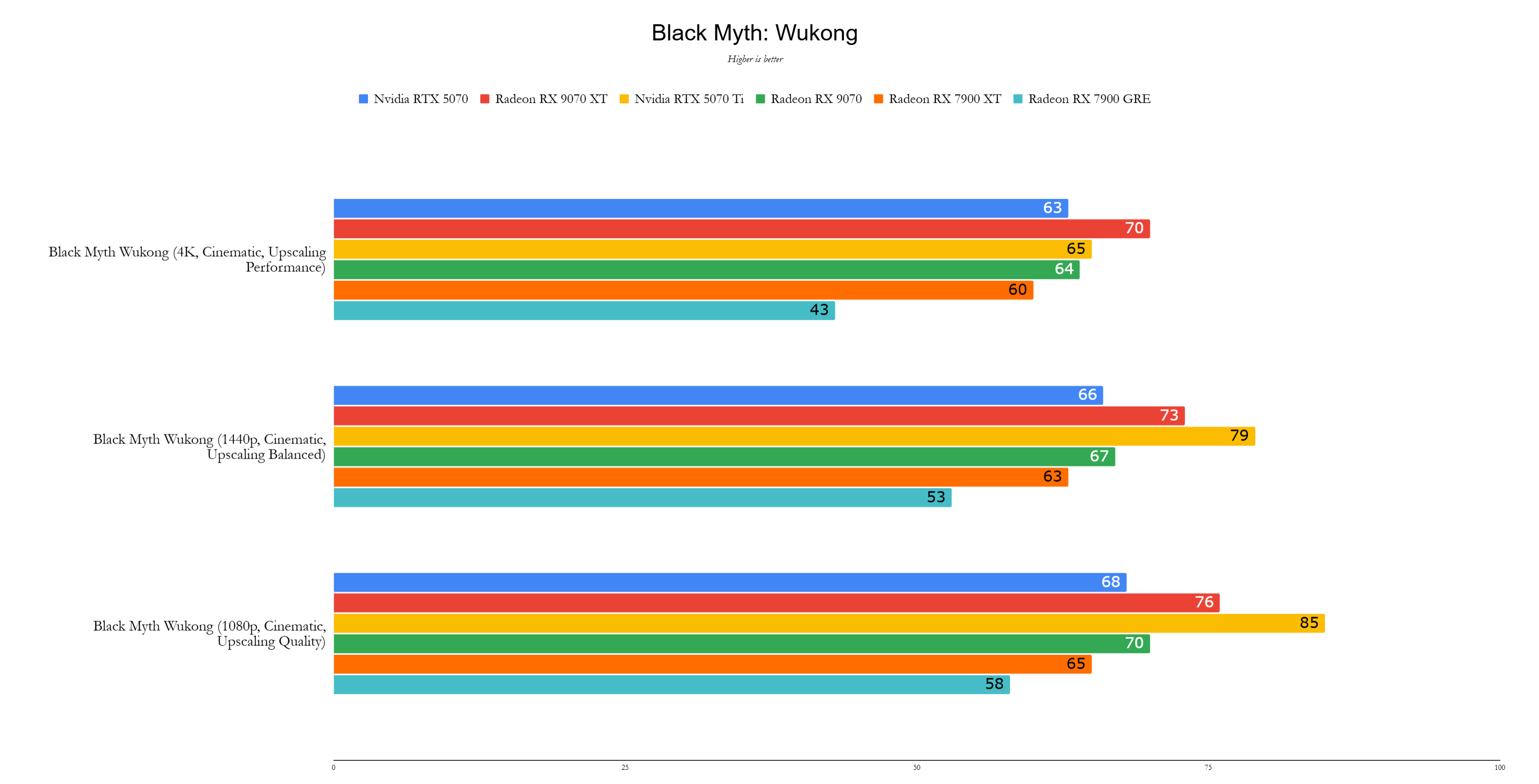 11 Images
11 Images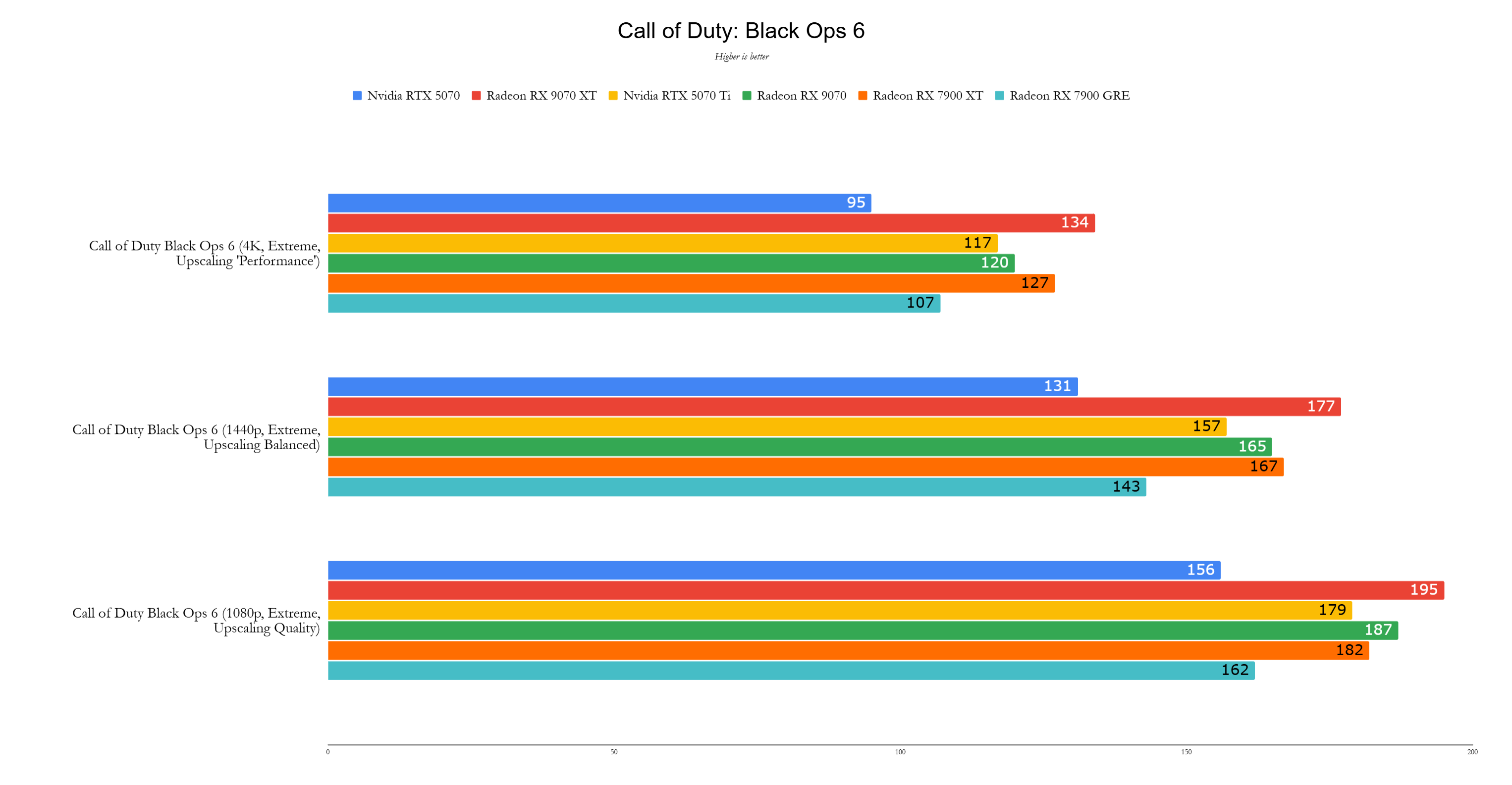
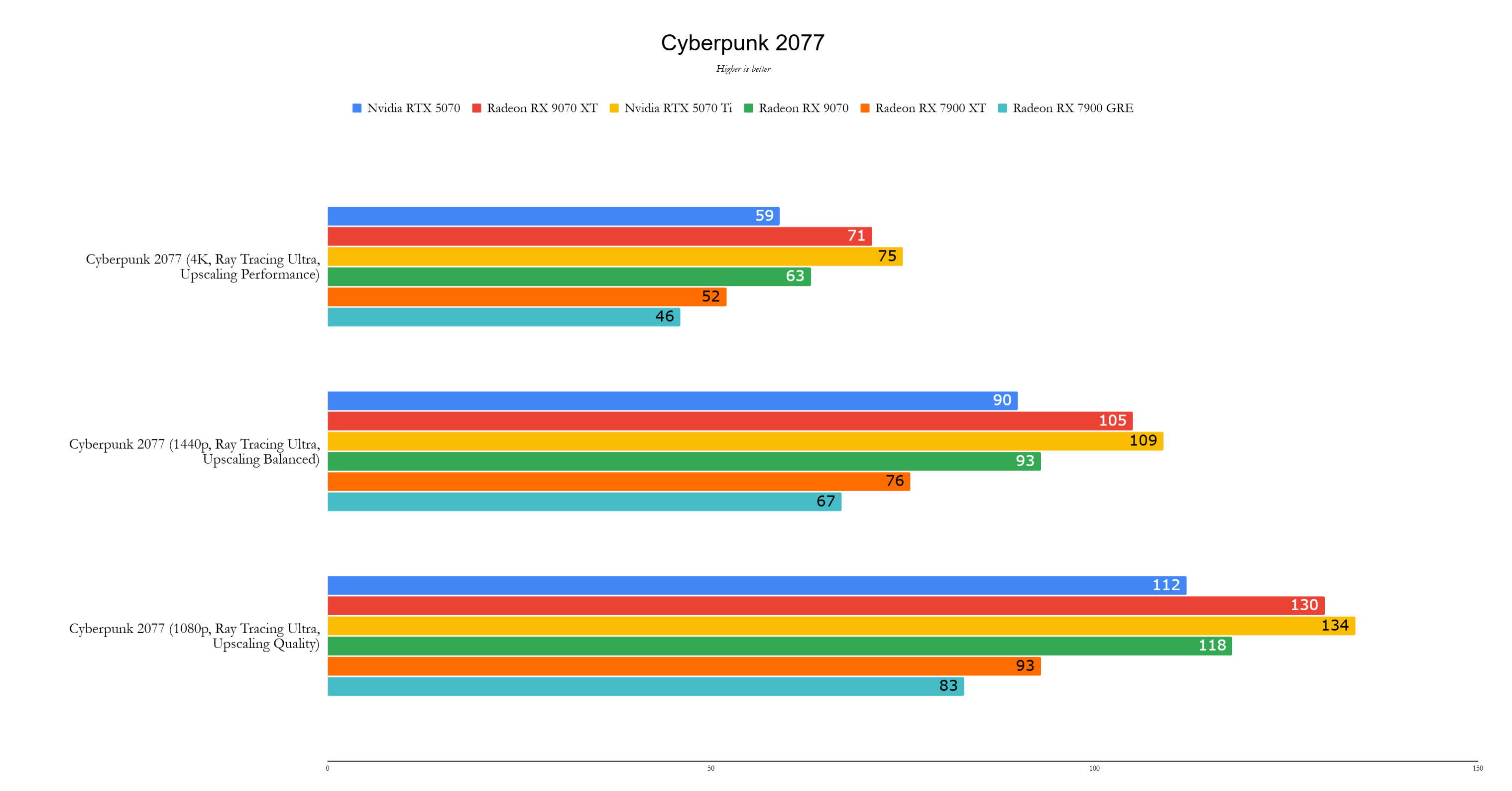
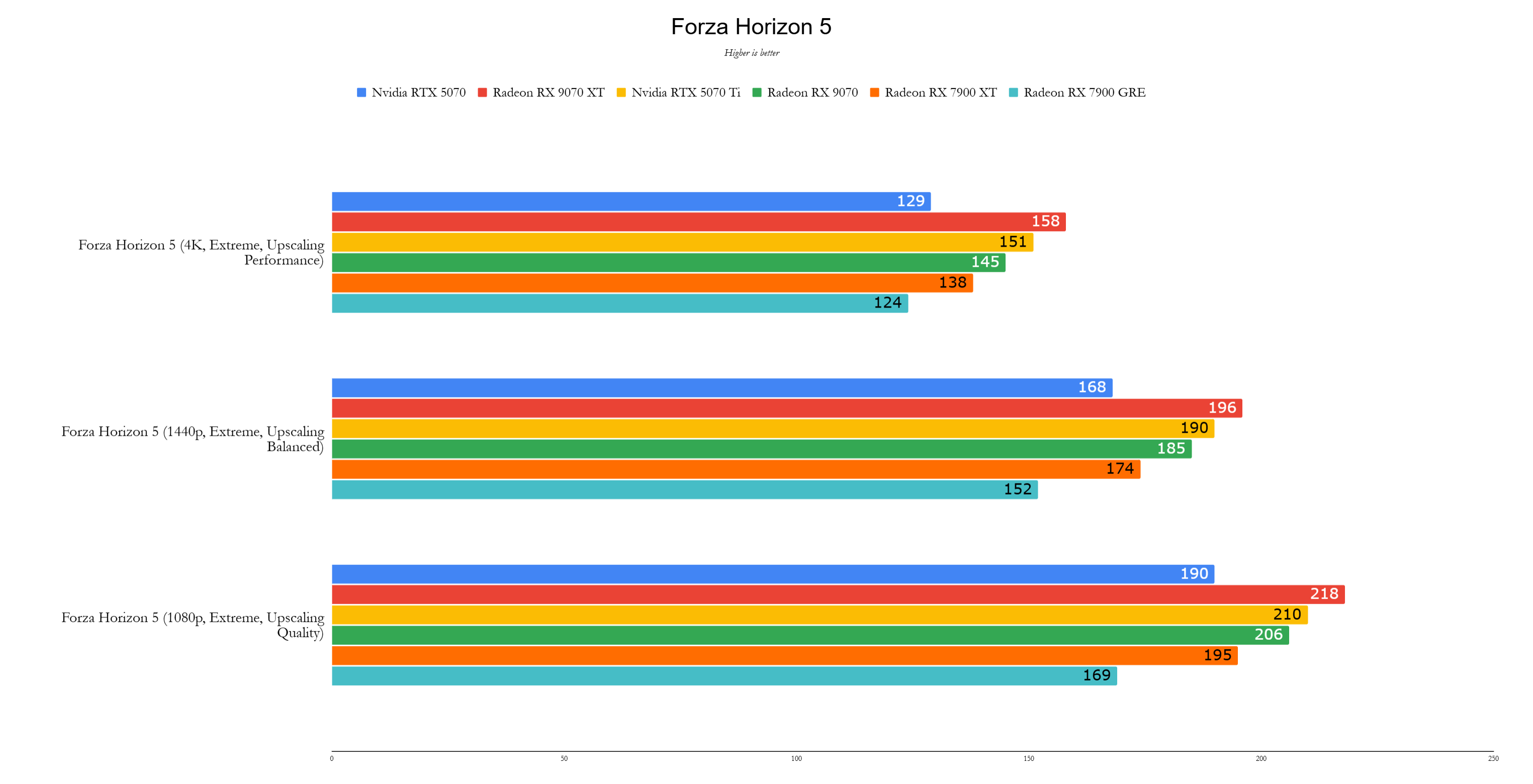
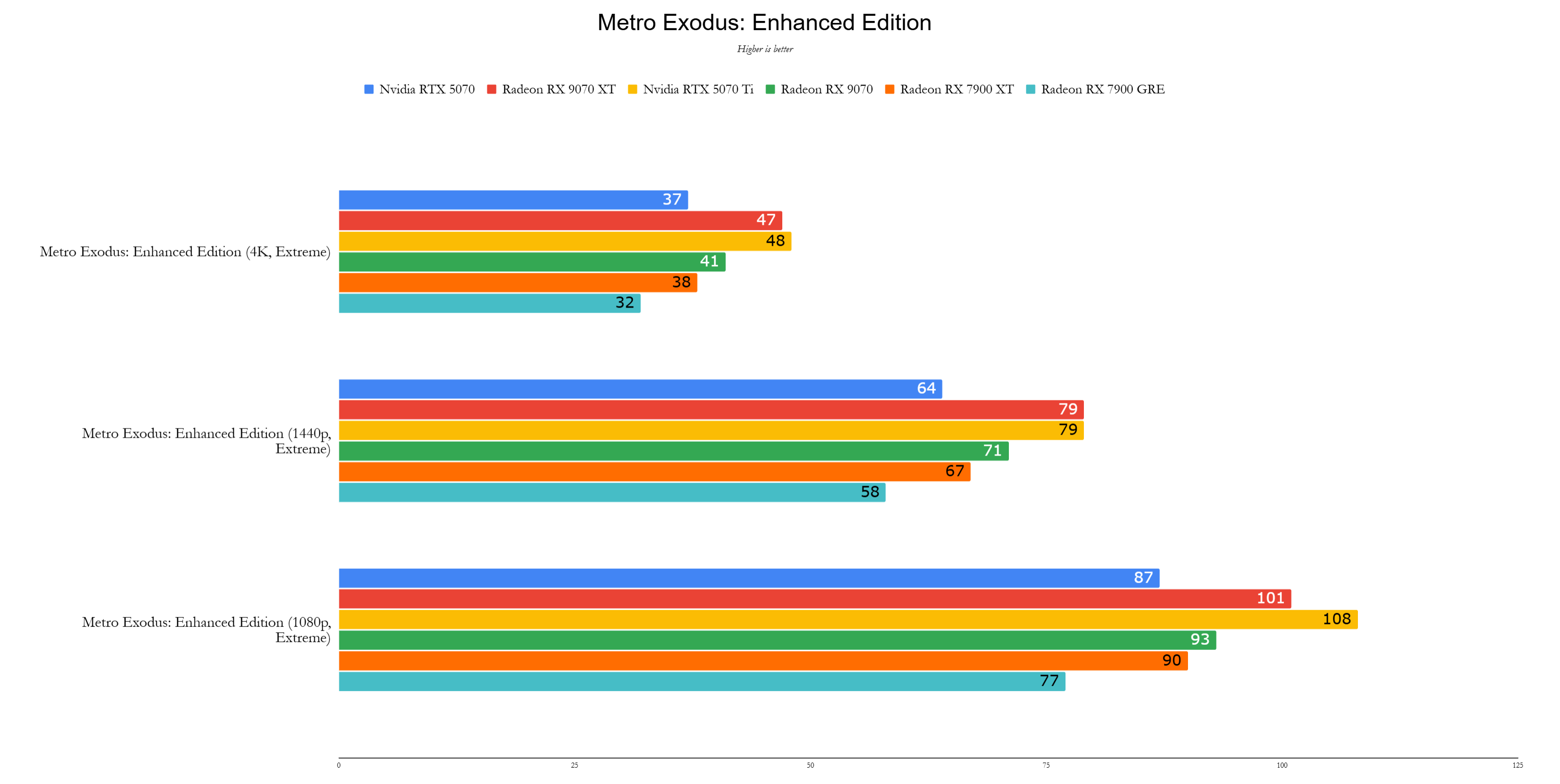
Performance
At $549, the RX 9070 surpasses the RTX 5070 in most 1440p benchmarks, achieving a 12% average performance lead. It also significantly outperforms the RX 7900 GRE by 22%. This is remarkable considering the 30% reduction in cores.
Note: Testing used a factory-overclocked RX 9070 (Gigabyte Radeon RX 9070 Gaming OC) with a reported 2,700MHz boost clock (approximately 7% overclock). All cards were tested on their respective latest public drivers at the time of writing.
Benchmark results show consistent advantages for the RX 9070 across various titles, including Call of Duty: Black Ops 6, Cyberpunk 2077, Metro Exodus, Red Dead Redemption 2, and Assassin's Creed Mirage. While Total War: Warhammer 3 and Black Myth Wukong showed closer performance, the RX 9070 still held its own. Forza Horizon 5 also demonstrated a significant performance advantage.
The RX 9070's superior performance and 16GB VRAM make it a more future-proof and cost-effective option compared to the RTX 5070, even if their performance were comparable (which it isn't).
Test System:
- CPU: AMD Ryzen 7 9800X3D
- Motherboard: Asus ROG Crosshair X870E Hero
- RAM: 32GB G.Skill Trident Z5 Neo @ 6,000MHz
- SSD: 4TB Samsung 990 Pro
- CPU Cooler: Asus ROG Ryujin III 360
The Radeon RX 9070's strong performance against the RTX 5070 at the same price point is impressive. The larger VRAM capacity further solidifies its value proposition.








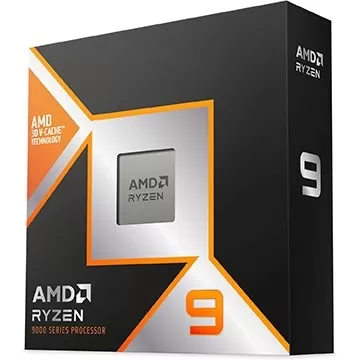
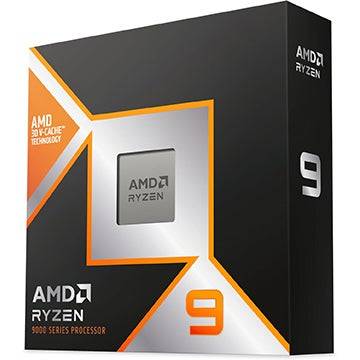
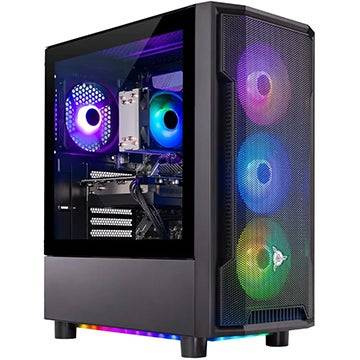
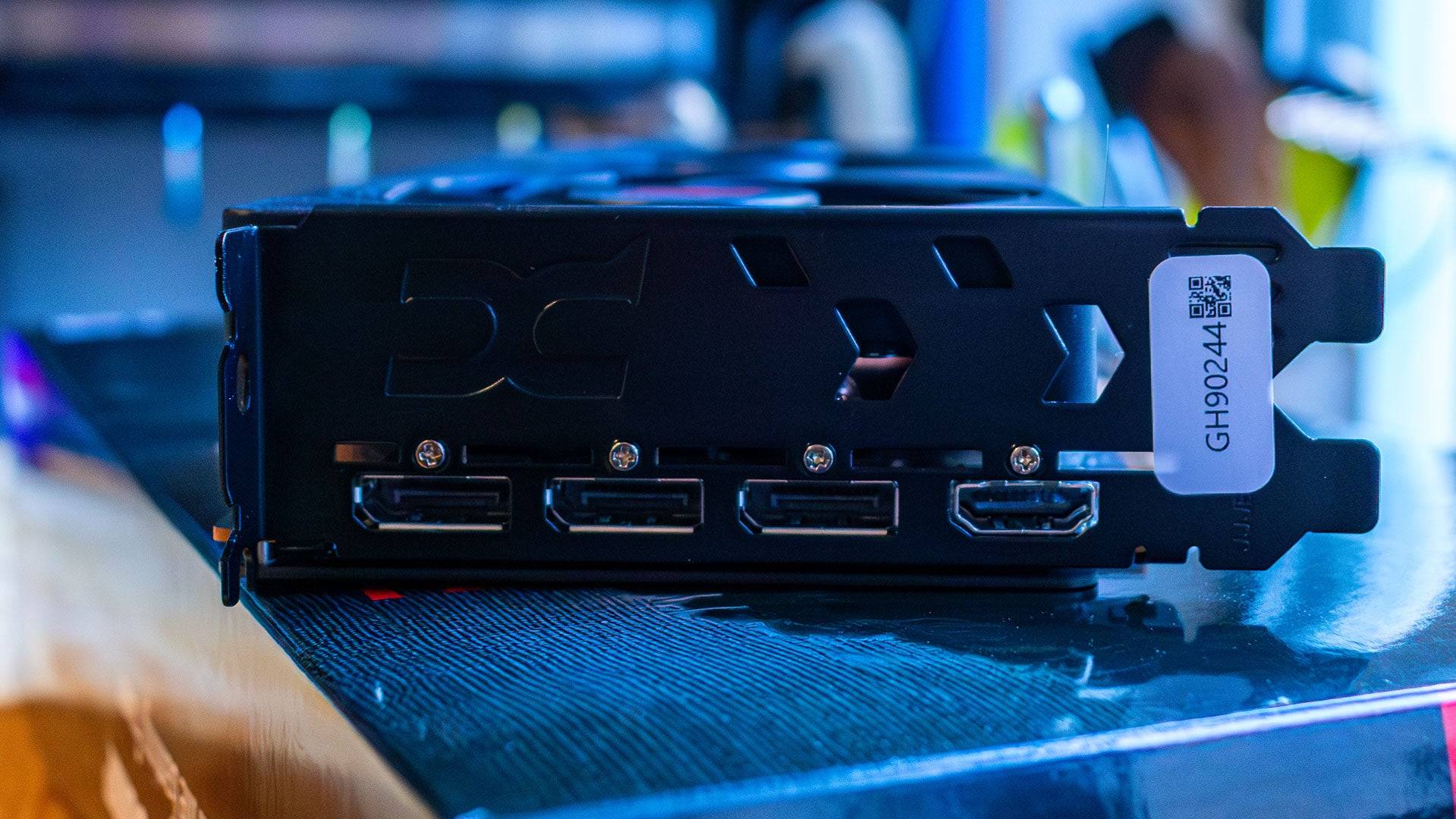
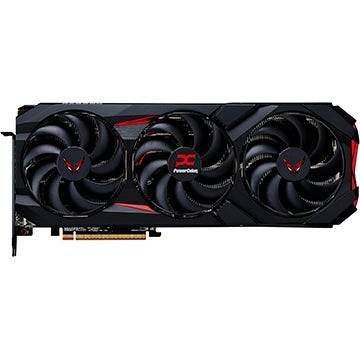








![Salvation in Nightmare [v0.4.4]](https://imgs.21qcq.com/uploads/36/1719555347667e551321c26.jpg)




